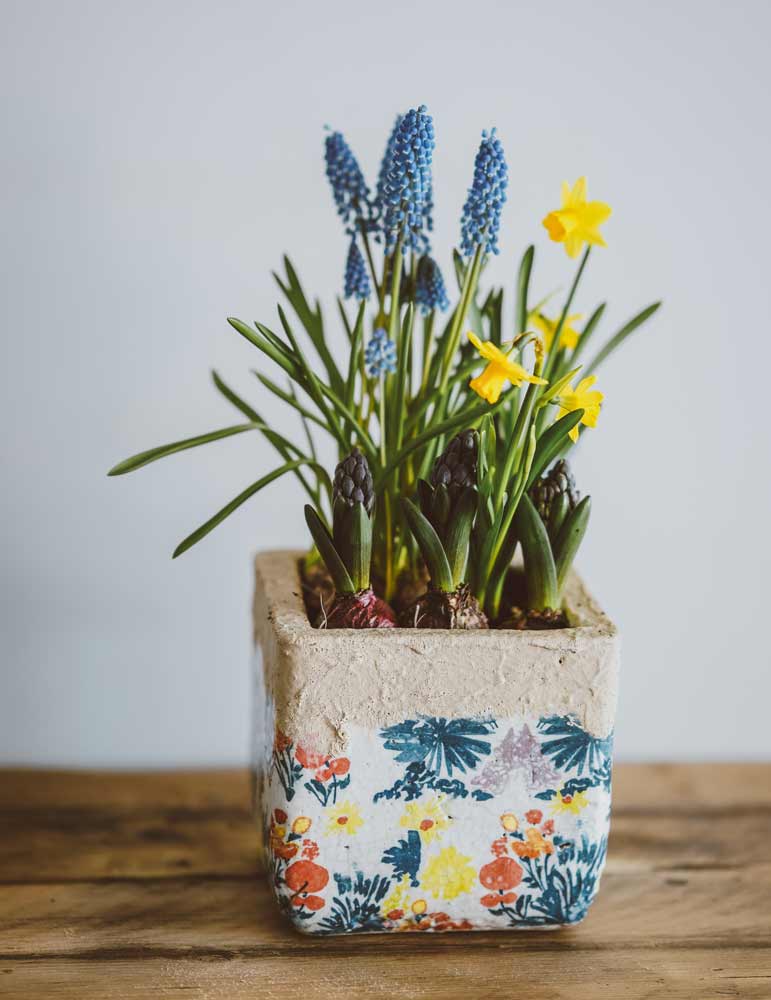Start Spring on the right foot with daffodils
With daffodils beginning to pop up everywhere, it’s clear to see that can only mean one thing: spring is on its way. There is nothing that brings more joy and hope than the sight of yellow and white flowers scattered throughout gardens and fields and the knowledge that the cold and dismal weather of winter is now behind us.
What’s more, daffodils also signify new lambs being born, and the Cancer Society’s biggest fundraiser: Daffodil Day. This year, Daffodil Day falls on August 31, which means volunteers will be out in their droves, offering daffodils in exchange for donations. Click here if you want to be a part of Daffodil Day, or support the noble cause.
What Does the Daffodil Mean?
Daffodils, while beautiful, also have many meanings. They are typically the first flower to bloom as winter turns to spring, and they are also the symbol of rebirth, new beginnings, awareness, memory, forgiveness, and vitality.
For the Cancer Society, however, the daffodil is used for Daffodil Day to signify and symbolise hope for a cure. Cancer claims the lives of thousands of people in New Zealand every year, but with research – for which funding is necessary – there is hope for a cure, prevention, and education.
How to Grow Daffodils
If nothing would bring you more pleasure than opening your curtains in the morning to see striking white and yellow fresh blooms in your garden, then it might be time to learn how to grow daffodils. Daffodil care is easier than you think, but if you need help, there is always an expert on hand to lend their advice.
What You Will Need:
Gardening gloves
Soil or potting mix
Pots and planters
Mulch or compost
Fertiliser
Daffodil bulbs
Step one: Choose the variety
Contrary to popular belief, daffodil types differ depending on your area. That’s why when you see people out collecting money for Daffodil Day, you find that some are yellow with orange centres, or white with yellow centres. Talk to a garden store attendant about the best variety to suit your region.
Step two: The Pre-planting Stage
If you’re not an avid gardener, never fear. The pre-planting stage of daffodils is easy. However, if you don’t feel confident completing this task yourself, contact daffodil care experts who can help. Pre-planting your daffodils involves waiting until Autumn, around daylight saving. When the soil is cold enough, you can plant your bulbs so that they will lie dormant over the colder months.
Make sure the bulbs are decent in size for a better chance of a successful bloom. Learning how to grow daffodils properly can often take more than one planting season to get the hang of it.
When you’re looking for a site in which to plant your bulbs, pay attention to the positioning. Make sure it’s an area that gets plenty of sunlight but also has free-draining soil. Some varieties like a bit of shade, so pay attention to what the packaging of your bulbs state.
Read more → Save mega bucks and grow your own avocados
How to Grow Daffodils in a Pot
If you don’t have a lot of space to spare in your garden, or you prefer to plant your flowers in pots, then it’s also possible to learn how to grow daffodils in containers as well. However, you will need to opt for bulbs that grow shorter with smaller flowers.
Find a large pot or container with excellent drainage holes and fill it with soil or potting mix with fertiliser. The slow-releasing variety is the best.
Plant the bulbs evenly in the pot but ensure that none of them touch each other or even the edges of the container. Give them plenty of water and shade until you see shoots beginning to form. Once they start to grow, you can move the pot into the sunlight.
Then, when you begin to see foliage, you can apply liquid fertiliser to help with flowering. Before long, you will have a pot filled with beautiful daffodils – just in time for spring and Daffodil Day.
How to Reuse Daffodil Bulbs
Rather than buy new bulbs every year, did you know you can reuse the ones you already bought? Below is a step-by-step guide for daffodil bulb care.
Once your bulbs have finished flowering, fertilise them with bulb food.
Tie the bulb’s foliage around itself and secure it in a rubber band.
When the leaves encompassing it have died off, remove the bulbs from the soil.
Remove the foliage once it has completely dried out and starts to come away naturally
Store your bulbs in a mesh bag in a dry, cool place until the next planting season
A Passion for Daffodils
Seeing volunteers selling vibrant posies of daffodils for Daffodil Day can bring a smile to anyone’s face. However, if you find yourself passionate about this stunning flower for more than one day a year, then why not make it a real hobby?
In New Zealand, the New Zealand Daffodil Society provides a host of information for daffodil care, how to grow daffodils, and how to join a Daffodil Club.
If you become part of a club along with others passionate about the flower, you can attend daffodil shows, see various displays, learn where to buy the best bulbs, and even how to grow specialist daffodils from high-quality bulbs. You can also learn more about upcoming events.
What started out as an indicator that better weather was on the horizon has now turned into a symbol for hope and a chance to make money for cancer research and resources with The Cancer Society. If you want to grow daffodils for yourself and you’re not sure how, you will find this information above can go a long way toward helping you realise a new passion. You never know, it could be the very thing you need to uncover a hidden garden talent.





